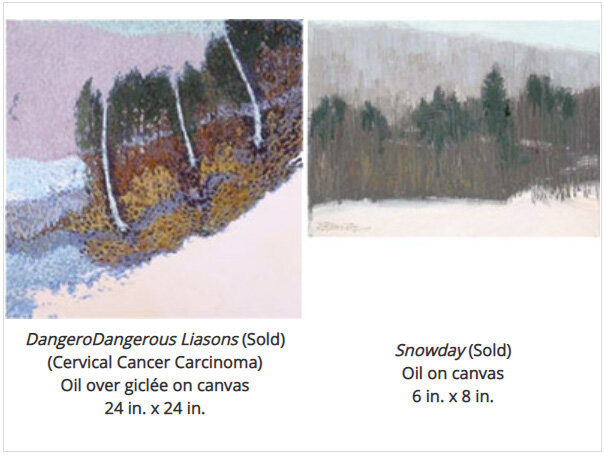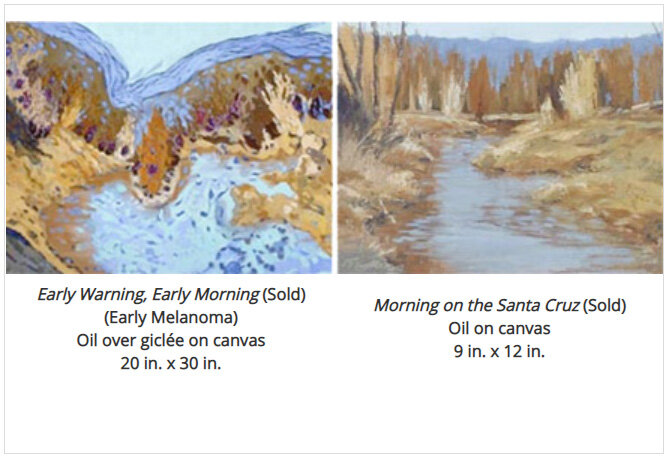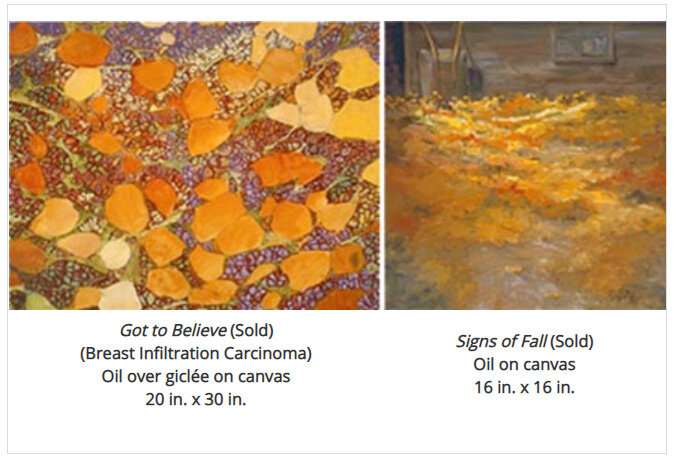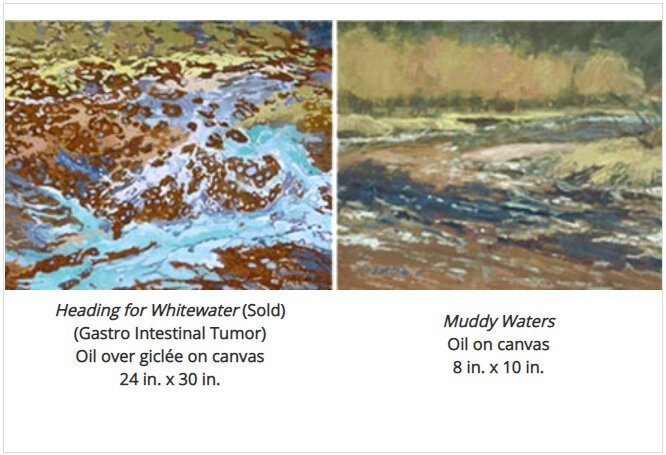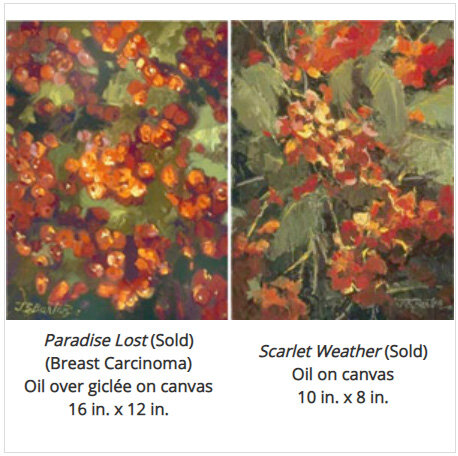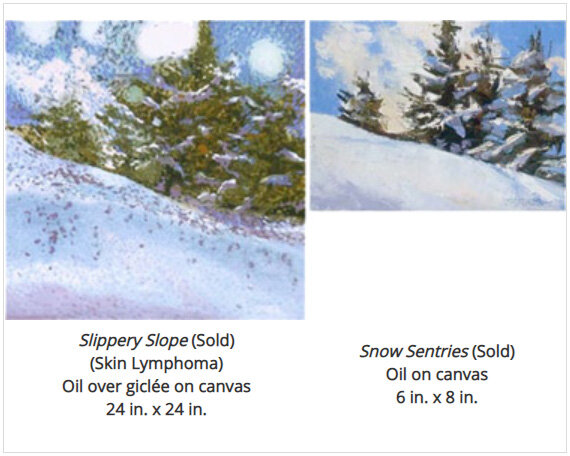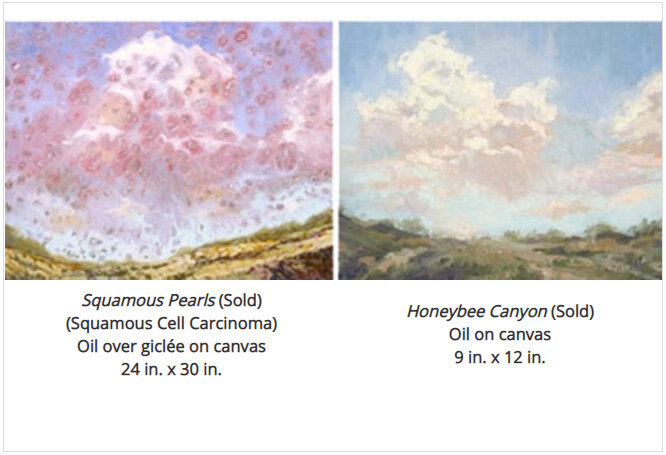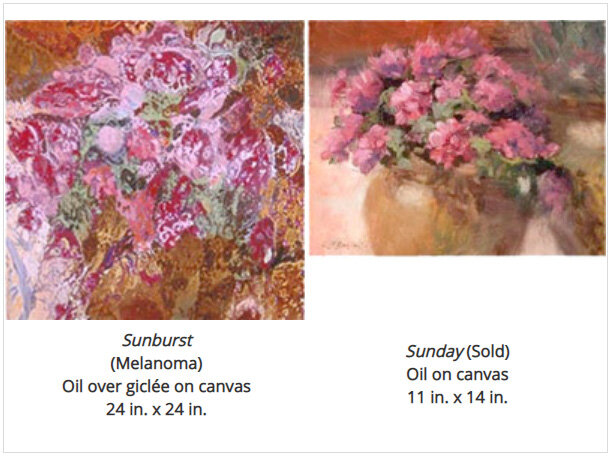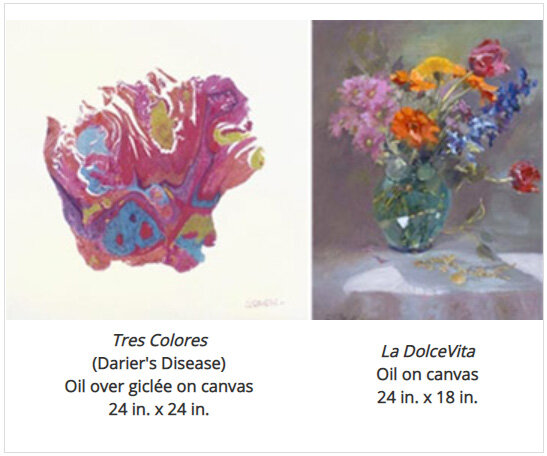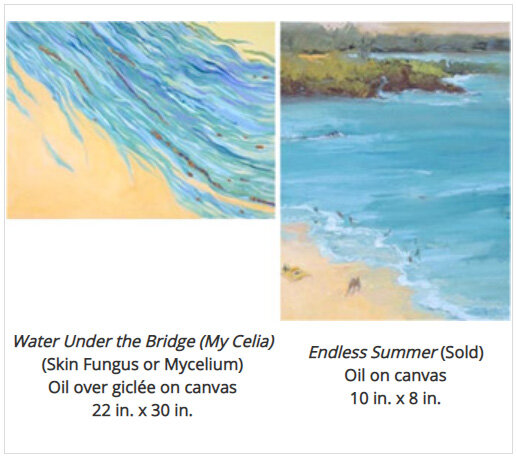Artist Statement
Like most artists, my creative ideas can come from anywhere. The idea for this show began in a darkened room at a seminar for Pathologists in Snowmass, CO. I was in charge of the projector during a lecture including hundreds of slides by the renowned pathologist, Dr. Lawrence Weiss. Just as I began to wonder if I would survive 4 hours of huge, indecipherable images, two slides appeared on the screen, side by side. A diptych? In my eyes I saw a beautiful pair of images that looked like art. Suddenly, in between the mysterious, multi-syllabic medical jargon I heard words I understood: "architecture," "spatial relationships," "clusters" and "edges". He was, I realized, describing a landscape. I quickly began sketching the image and making notes on a 4 x 5 inch notepad. I still have that piece of paper, the first physical evidence of this series, with the rough sketch and the words "colorful", "large", "normal lymph node, tumor" and "hairy cell leukemia". Well, artists are known for finding beauty in unexpected places.
Both artists and pathologists look for the patterns of light, color and detail necessary to communicate the essence of the landscape before them. The landscape may be miles across or smaller than a spec of dust, but the point of view—and beauty—is still filtered through the eyes of the beholder, whether artist or pathologist.
Just as I discovered the synergy between the work of the artist and the pathologist, the slides that I chose exhibited a strong visual or spatial connection with a series of plein air paintings that I produced over the past few years. I liked the idea of making the microscopic images large and the "real" landscapes small, which reinforced the idea that in art, as in life, it is far more interesting to keep one's point of view fluid rather than locking into the ordinary or conventional. Perhaps someday artists will be brought in to Medical Schools to help educate the eyes of future pathologists and the next Jackson Pollock may be a practicing pathologist. One fact is certain: Nature offers combinations that guarantee you'll never be bored. The first step is simply to take the time to stop and look.
The Process
The smaller, plein air landscape paintings were painted in oil on site in various locations.
The slides for the "Pathscapes" paintings were provided by Ventana Medical Systems and PBC Laboratory, founded by Dr. Paul Bozzo. The biopsy slides were scanned and printed as giclées on canvas by Arizona Lithographers. I then painted over them in oils. In art, "pentimento" refers to signs of reworking the surface, often referred to when paintings are x-rayed and there is revealed an image under the surface image. I was very conscious of maintaining the underlying cell structure of each pathology landscape and in some areas I left the original giclée, or biopsy layer, untouched while painting over the rest of the surface in oil to describe the connection between the biopsy and plein air landscape.
What is a "Pathscape'?
This series was created as a tribute to my late husband, renowned pathologist and teacher Dr. Paul Bozzo. We shared a love of beauty, even in the most unexpected places. Just as artists study a landscape, Pathologists spend their days studying the shape, color and design of tissue under a microscope. These slide images, once enlarged on canvas and painted in oil, became "Pathscapes" which I paired with "real" landscapes that I painted en plein air (in the fresh air). I especially liked the idea of making the microscopic images large and the "real" landscapes small. Each landscape in this series may actually be miles across or smaller than a spec of dust, but the point of view—and beauty—is still filtered through the eyes of the beholder, whether artist or pathologist. Nature offers combinations of light, color and detail that guarantee you'll never be bored. The first step is simply to take the time to stop and look.
Images are also available in signed, limited edition giclée prints. Please contact us by phone or email for more information: 520.465.8229 or jane@janebartonstudio.com
Please note: pieces from each series are sold separately or as a diptych of both the Pathscape and it's paired "real landscape" .
